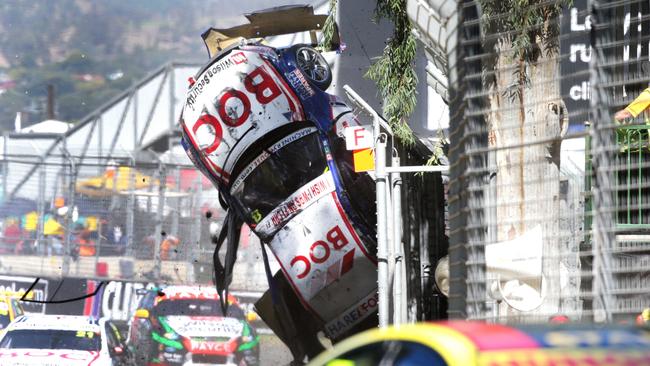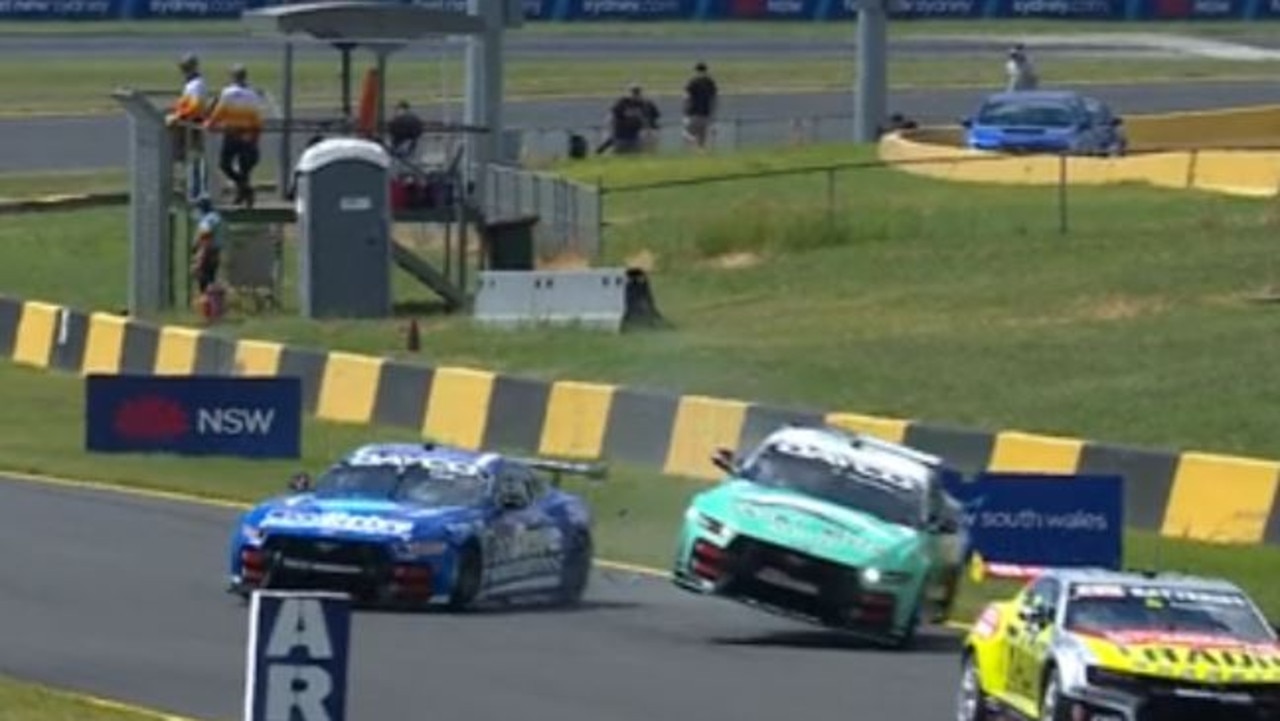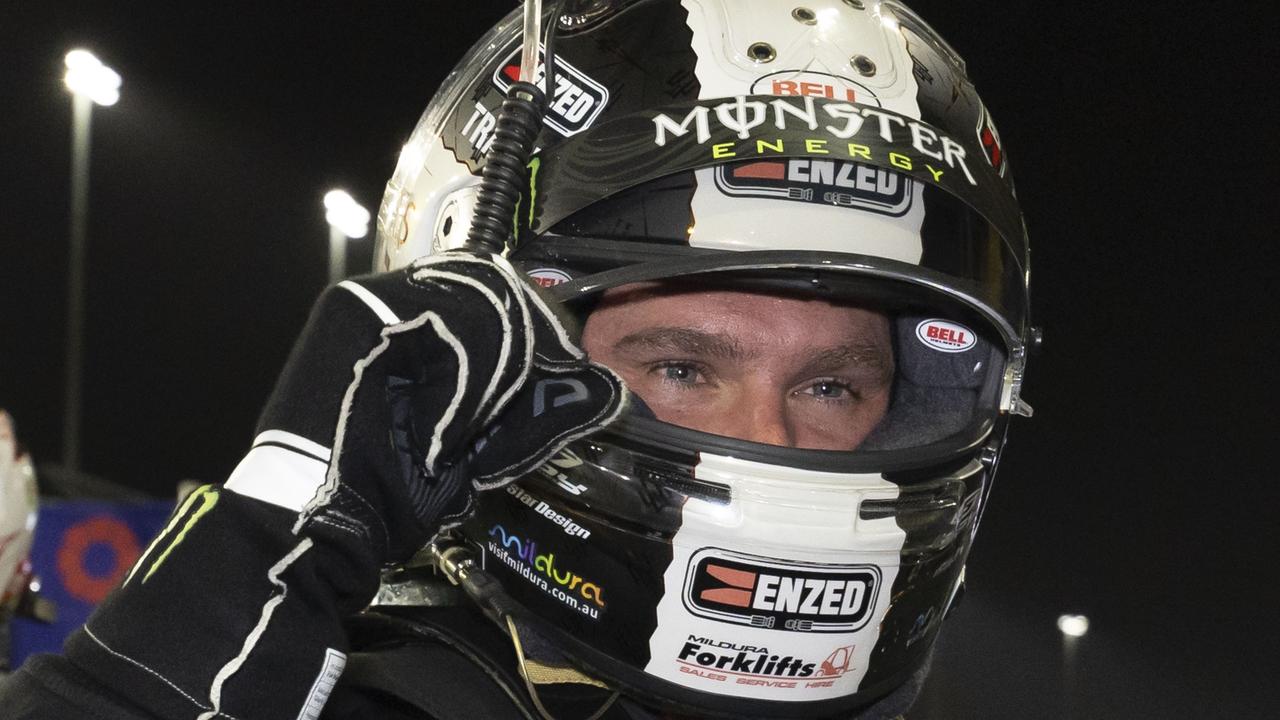Adelaide 500: V8 race has earned $545.8m for South Australian economy
IT is known as “the 500” to reflect the kilometres travelled but as it celebrates 20 years of action, organisers have revealed the motorsport event has broken the $500 million mark in dollars earned for the local economy.
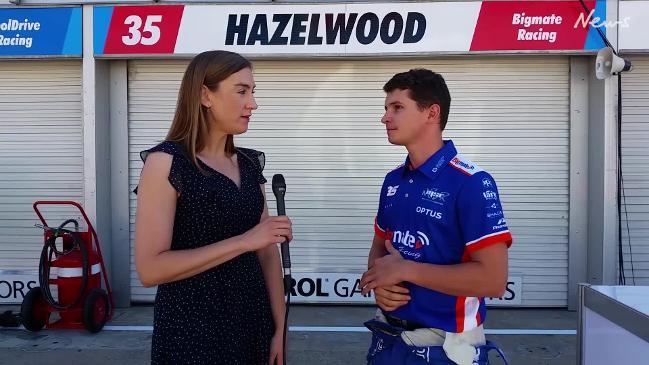
V8
Don't miss out on the headlines from V8. Followed categories will be added to My News.
- How to beat the race gridlock home
- Todd Hazelwood leads drivers in getting set for Adelaide 500
- Adelaide 500 supersite: All the latest news and updates
READ BELOW: The premier idea for a race that jump-started SA
IT is known as “the 500” to reflect the kilometres travelled but as it celebrates 20 years of action, organisers have revealed the motorsport event has broken the $500 million mark in dollars earned for the local economy.
From modest beginnings in 1998 — earning $13 million for the state in the first year — last year’s event banked $39.5 million, the South Australian Tourism Commission says.
“The Adelaide 500 has become Australia’s largest domestic motorsport event, providing an accumulated $545.8 million in economic benefit to the state, creating over 400 full-time equivalent jobs per year, and filling Adelaide’s hotels, motels and caravan parks with interstate and overseas visitors,’’ race general manager Nathan Cayzer said.
To arrest last year’s decline in ticket sales, organisers signed superstar Robbie Williams for the Sunday night concert, which could threaten the day four record for the event set in 2013 at 95,000.
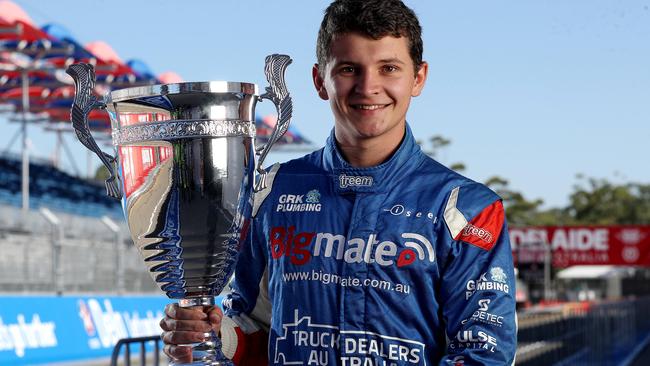
“General admission tickets for Sunday night’s Robbie Williams concert are currently sitting at nearly 15,000 sales and are close to being exhausted. We are encouraging fans to get in early to avoid disappointment,” Mr Cayzer said.
“In 2013, we sold 16,500 Sunday tickets when KISS performed.’’
Mr Cayzer said weather forecasts predicted Adelaide would avoid heatwave conditions. “Adelaide 500 is also sweetening the deal with children under 14 attending the event for free when accompanying a paying adult,’’ he said.
“We expect that as families have a clearer picture of the weather for the weekend, ticket sales will continue to grow.”
Thursday is predicted to be 27 degrees in Adelaide followed by 29, 28 and 23 degrees with no rain expected.
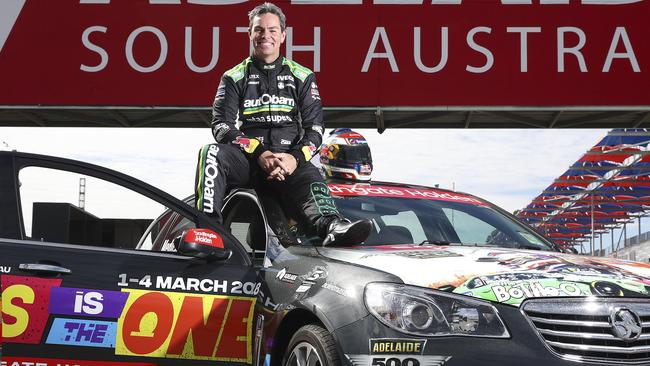
SA’s major events are independently costed to reveal the “economic benefit” from not only ticket sales but spending by local, interstate and international visitors to Adelaide.
On the eve of the event’s 20th anniversary, former Premier John Olsen said it had been a “high risk” venture, but one which had paid off for the state.
“We were making some tough decisions at the time and to balance it out, we talked about getting Formula One back, which wouldn’t work so we said ‘what about getting the V8s’,’’ Mr Olsen said.
Tony Cochrane, a marketing expert who had left school at 14 to set up an events lighting business in Unley, was a friend of Mr Olsen’s.
He had begun a 16-year tenure as executive chairman of V8 Supercars. “He knew the potential of Adelaide and the fact that 20 years on it is still working and still creating income is a credit to everyone involved,’’ Mr Olsen said.
Mr Cochrane said yesterday the race was “never meant to go for 20 years”.
“It is a killer location, that is always the best thing the race had going for it,’’ he said.
THE PREMIER IDEA FOR A RACE THAT HELPED JUMP-START THE STATE
Comment by Miles Kemp
FAIR dinkum? Common V8 Holdens and Fords belting around the hallowed corners of Adelaide’s world-famous F1 track?
I may have been slightly more respectful when premier John Olsen called in 1998 to sell his big idea, but that was my immediate thought as I wondered how the plan would play out with the city’s motorsport aficionados.
My second thought was how Adelaide’s can’t-do, naysayer set would greet the news.
They had their beliefs confirmed by the State Bank collapse of 1991, and were sure to be enraged by this noisy and unwelcome intrusion into their dog-walking area in Victoria Park.
As the reaction to the first few races later proved, the V8s were always going to be decried as “second best”, “lowbrow”, “of no interest”, “a noisy nuisance”, etc, etc, etc.
At the time Aussie-made V8s were little more than modified family sedans that retailed for $45,000, and were of little interest to anyone other than drivers who wanted a big “donk” and reliable ride on our substandard roads.
I knew otherwise. I had grown up watching heroes like Dick Johnson belting around tracks like Mount Panorama in NSW and my home track of Lakeside in Brisbane. Cunning marketing was also positioning the traditional V8 races as music-fuelled magnets for many who had no interest in motorsport, and it was easy to imagine Adelaide’s east end as the perfect venue.
John Olsen was SA’s “can do” premier, struggling to cut through the fog of his 1997 election near-miss and South Australia’s national “rust belt” status. His big idea sounded exciting. The Advertiser agreed, as did legendary ’Tiser motoring writers Stuart Innes and Bob Jennings, with whom I wrote a front-page story for the next day’s edition.
The Clipsal 500, as it became known for the second year’s event, wasn’t a big deal to start with. A total crowd of about 50,000 — what we now regularly get to an AFL game at Adelaide Oval — was expected and a relatively modest $13 million was generated for the state’s economy. But the annual crowds grew to a quarter of a million and the total economic impact is now almost $550 million as the event moves into its 20th year.
“It’s Adelaide Alive Again” read the page 1 headline of the daily paper, mimicking the F1 “Adelaide Alive” catchcry. Olsen was right.
And by the way, carn the Fords!

